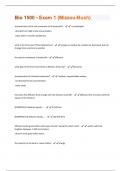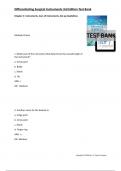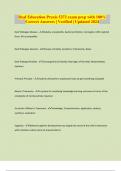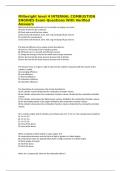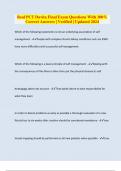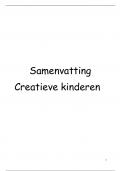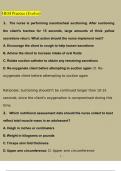Exam (elaborations)
Bio 1500 - Exam 1 (Mizzou-Bush) Questions And Answers Rated A+ New Update Assured Satisfaction
- Course
- Institution
characteristics of the net movement of all molecules? - -is predictable -directed from high to low concentration -stops when it reaches equilibrium what is the First Law of Thermodynamics? - energy can neither be created nor destroyed, but can change from one form to another the passive moveme...
[Show more]
